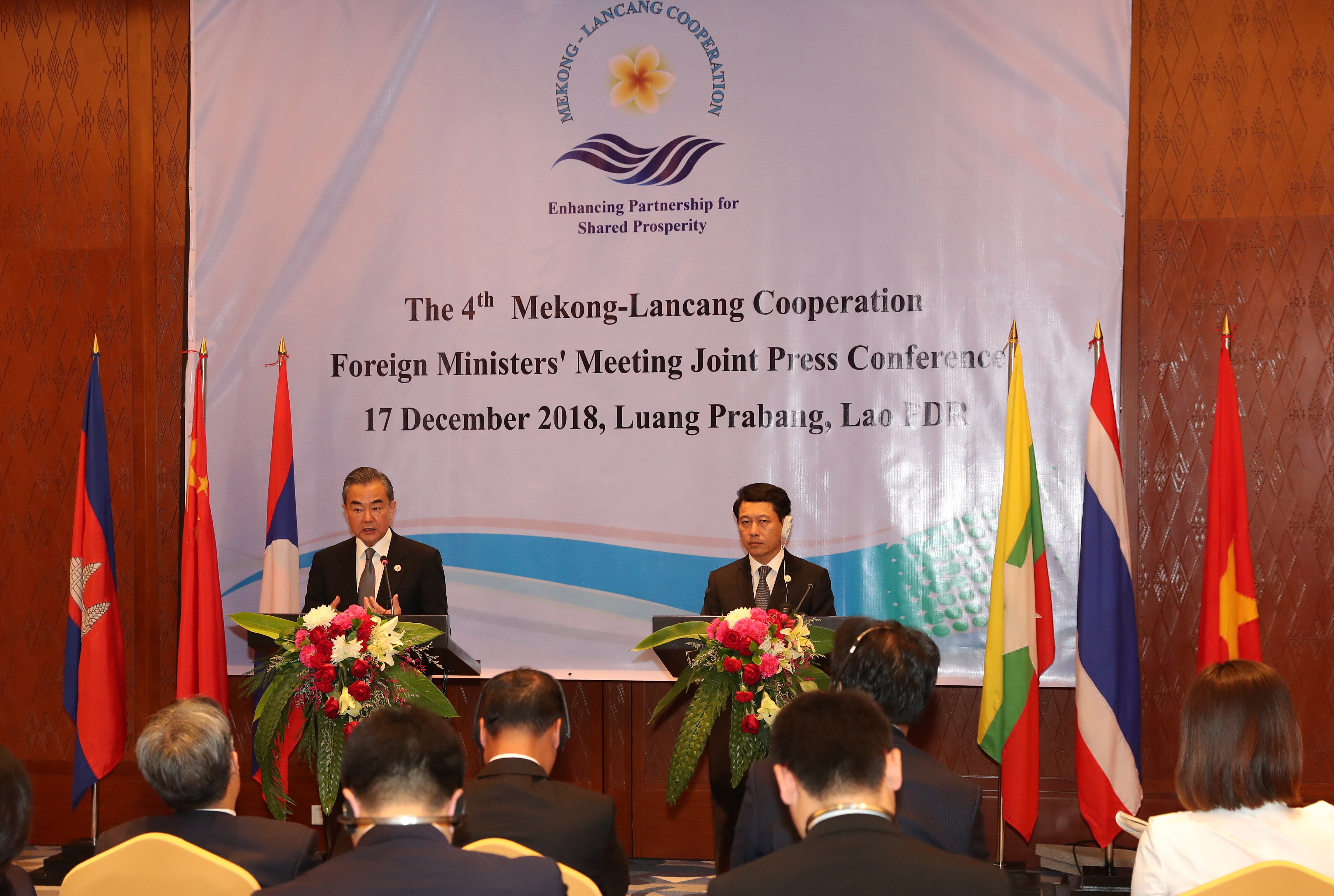China, Laos continue to improve ties, cooperation
- By George N. Tzogopoulos
 0 Comment(s)
0 Comment(s) Print
Print E-mail China.org.cn, December 26, 2018
E-mail China.org.cn, December 26, 2018

Relations between China and Laos are continuously improving. The recent visit to Laos by Chinese State Councilor and Foreign Minister Wang Yi, where he met with his counterpart Saleumxay Kommasith and President Bounnhang Vorachith, marked the successful conclusion of a year of smooth collaboration. Prospects for 2019 look bright, as the two sides will celebrate the tenth anniversary of their comprehensive strategic partnership and have pledged to boost tourism by announcing the "Visit China-Laos Year 2019."
China has placed much importance on the advancement of bilateral relations with Laos. The two sides have pledged to enrich their partnership: Laos President Bounnhang Vorachith visited Beijing in May, and agreed to advance the building of a shared future to achieve positive outcomes. In July 2018, Chinese rescuers played a critical role in supporting people after a dam collapsed in southeast Laos.
On the whole, economic relations are flourishing. Bilateral trade volume has exceeded US$2 billion on an annual basis in recent years. According to a report issued by the China Economic Information Service, China is currently the largest foreign investor, the second largest trade partner and the largest aid provider of Laos. The country is also the third largest destination of China's investment in ASEAN countries. Several infrastructure projects are being developed in the context of the Belt and Road Initiative. The building of the China-Laos railway constitutes a characteristic example.
Additionally, Chinese companies – namely Hubei Hongyuan Power Engineering of PowerChina and Hebei Installation Engineering – signed contracts in August for the construction and installation of energy units in Laos, as well as for the distribution of electricity. Other developments include the beginning of the operation of the Southeast Asia Tower Company, where the Chinese state-owned China Tower is collaborating with local Lao enterprises to build better communication infrastructure. It can also be expected that the two countries will reach an agreement on the building of the China-Laos economic corridor following a memorandum of understanding signed last winter.

Beyond bilateral ties between China and Laos, Wang Yi also visited the city of Luang Prabang where the 4th Lancang-Mekong Cooperation (LMC) meeting at the level of foreign ministers took place. This initiative was decided in 2015 and launched in 2016. Its objective is to strengthen sub-regional cooperation among China, Laos, Cambodia, Myanmar, Thailand and Vietnam. On the whole, discussions focus on political and security issues, economic and sustainable development as well as cultural and people-to-people exchanges. Official priorities include connectivity, production capacity, cross-border economic cooperation, water resources, agriculture and poverty reduction.
A special LMC fund set up by China is providing funding for relevant projects while other financial instruments – such as the Asian Infrastructure Investment Bank, the Silk Road Fund and the Asian Development Bank – might similarly offer some resources. The five-year plan of action that was announced at the beginning of the year and will expire in 2022 is aligned not only with the Belt and Road Initiative but also with the ASEAN Community Vision 2025 as well as the Master Plan on ASEAN Connectivity 2025. The implementation of the UN 2030 Agenda for Sustainable Development remains an overarching objective.
Wang Yi said in Laos that LMC could have a bright future. China is also highly interested in improving its cooperation with ASEAN and the new platform of sub-regional cooperation is contributing towards this direction. The recent Luang Prabang meeting was hailed as a success, as all ministers agreed to continue with synergies and integration schemes.
George N. Tzogopoulos is a columnist with China.org.cn. For more information please visit:
http://www.china.org.cn/opinion/GeorgeNTzogopoulos.htm
Opinion articles reflect the views of their authors, not necessarily those of China.org.cn.






Go to Forum >>0 Comment(s)